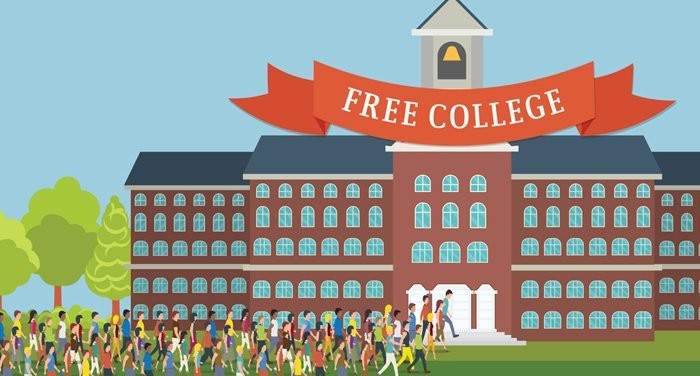
Measuring the impact on enrollment of Clinton’s free college plan
The idea of free college tuition has gotten a lot of wind behind it in this election cycle, backed first by Democratic candidate Bernie Sanders and now embraced by that party’s nominee Hillary Clinton. The idea is intrinsically appealing. Many young people dismiss the thought of going to college based on the price tag alone. That decision may rob them of the workplace benefits and additional earnings that a postsecondary credential would bring.
But how would it work exactly?
The Georgetown University Center on Education and the Workforce was asked to analyze what the potential impacts would be on enrollment. We believe enrollments at public colleges and universities will increase by 9 percent to 22 percent, with a median estimate of 16 percent. Much of the enrollment growth will come at open-access public colleges. We believe their enrollments will increase by 13-31 percent, with a median estimate of 23 percent.
We ground these estimates in patterns that can be observed when individual colleges drastically reduce costs or make student loans cheaper and more accessible. College students and their families are definitely price-sensitive. Enrollment at community colleges in Tennessee increased 20-25 percent in the first year when they were made free by the Tennessee Promise. We believe there will be a huge response if college was made free. But given the dearth of analogous situations, our estimates are really just informed guesses.
About three-quarters of new students will come to college, we believe, because tuition has been eliminated. The other quarter of new public-university enrollment will be people who left the pricey private colleges and universities.
The Clinton campaign says it will create a $25 billion fund to help Historically Black Colleges and Universities, Hispanic-serving institutions, and other private colleges that serve minorities. Even so, we feel like the powerful lure of “free” would have the most deleterious effect on mid- and lower-tier private colleges and universities. Overall we believe enrollment would drop at private colleges by 7 percent to 15 percent, with a median projection of 11 percent.
There are many constituencies at play in the 4,000 colleges and universities in this country. Even though all higher education leaders would agree that they want to provide a postsecondary education to each student who wants one and is willing to work for it, it will be interesting to see how each faction responds to this plan if it advances.
Dr. Carnevale is Director and Research Professor of the Georgetown University Center on Education and the Workforce, an independent, nonprofit research and policy institute affiliated with the Georgetown McCourt School of Public Policy that studies the link between education, career qualifications, and workforce demands.